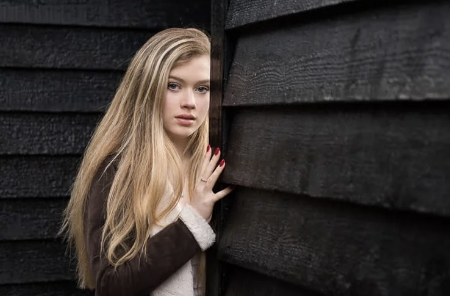Mastering Portrait Photography Composition: Tips for Stunning Photography
- Posted on

In this guide, we’ll cover the basics of portrait photography composition and provide you with some tips to help you create beautiful portraits.
Mastering Portrait Photography Composition: Tips for Stunning Photography
Portrait photography is one of the most popular and enduring forms of photography. Whether you are a professional photographer or an amateur, capturing the perfect portrait can be a challenge. However, with the right composition techniques, you can elevate your portrait photography and create stunning images.
In this guide, we’ll cover the basics of portrait photography composition and provide you with some tips to help you create beautiful portraits.
What is Composition for Portrait Photography?
Composition in photography refers to the way the elements within an image are arranged. The composition of an image is what makes it visually appealing. When it comes to portrait photography, composition is key to creating stunning images.
There are several composition techniques that photographers can use to create visually appealing portraits. Some of these techniques include:
- Rule of Thirds
- Leading Lines
- Framing
- Symmetry
- Depth of Field
- Lines
- Patterns
- Texture
- Negative Space
- Balance
- Color
- Perspective
- Point of View
- Backgrounds
- Lighting
- Angles
- Movement
- Expression
Each of these composition techniques can be used to create visually appealing portraits. However, when it comes to portrait photography, the most important techniques are the rule of thirds, framing, and leading lines.
Portrait Photography Composition Techniques
Rule of Thirds

The rule of thirds is one of the most well-known composition techniques in photography. It involves dividing the frame into a 3x3 grid and aligning the subject with the gridlines. By placing the subject along one of the gridlines, you create a more visually appealing image.
When it comes to portrait photography, the rule of thirds can be used in a number of ways. You can place the subject’s eye along one of the horizontal lines or place the subject’s face along one of the vertical lines. This technique can also be used to create a more visually appealing background.
Framing

Framing is another popular composition technique that can be used to create stunning portraits. This technique involves using elements within the image to frame the subject. By doing so, you can draw attention to the subject and create a more visually appealing image.
When it comes to portrait photography, the framing technique can be used in several ways. You can use natural elements like trees, doorways, or windows to frame the subject. You can also use elements like hands to frame the subject.
Leading Lines

Leading lines are lines within an image that lead the viewer’s eye towards the subject. This technique can be used to create visually appealing images by drawing attention to the subject.
In portrait photography, leading lines can be used in a number of ways. You can use lines on the ground to lead the viewer’s eye towards the subject. You can also use elements in the background to create leading lines.
How to Master Portrait Photography Composition
Now that you understand the basics of portrait photography composition, it is time to put that knowledge to use. In this section, we’ll cover some tips to help you master portrait photography composition.
Use a Prime Lens
One of the best ways to elevate your portrait photography is to use a prime lens. Prime lenses have a fixed focal length, meaning that they do not zoom. This can be limiting for some photographers, but it can also be very beneficial.
By using a prime lens, you can focus on perfecting your composition. Zoom lenses can make it easy to get the shot, but they can also make it difficult to focus on the composition of the image. Prime lenses force you to move around and find the perfect composition.
At Tuttle Cameras, our selection of lenses includes a variety of lenses with differing fixed focal lengths, including 16mm, 28mm, 35mm, and 85mm prime lenses.
Use the Right Background
The background of a portrait can make or break the image. A busy or distracting background can draw attention away from the subject. When it comes to portrait photography, you want the subject to be the center of attention.
Whether you are shooting in a studio or outdoors, it is important to consider the background of your portraits. In a studio, you have complete control over the background. In outdoor photography, you may need to consider moving around to find the perfect background.
Choose a background that is simple and unobtrusive. Look for backgrounds that are a single color or that have a simple pattern. If you are shooting in a studio, consider using a backdrop. Backdrops are a simple way to create a clean background for your portraits.
Adjust Your Perspective
Perspective is another important element of portrait photography composition. The perspective from which you take the photo can have a huge impact on the way the final image looks.
When it comes to portrait photography, consider adjusting your perspective to create visually appealing images. For example, you can shoot from a low angle to create a more powerful image. Shooting from a low angle can create the illusion that the subject is larger than life.
You can also try shooting from above to create a more flattering angle. Shooting from above can help to elongate the neck and create a more flattering portrait.
Use Negative Space
Negative space is the area around the subject that is not occupied by anything. In portrait photography, negative space can be used to create visually appealing images. By using negative space, you can draw attention to the subject and create a more visually appealing image.
When it comes to using negative space in portrait photography, less is often more. Negative space can be used to create a more minimalistic image. By using a simple background, you can create an image that draws attention to the subject.
Conclusion
Portrait photography is one of the most popular and enduring forms of photography. However, capturing the perfect portrait can be a challenge. When it comes to portrait photography, composition is key. By using the right composition techniques, you can elevate your portrait photography and create stunning images.
In this blog, we covered the basics of portrait photography composition and provided you with some tips to help you master portrait photography composition. We discussed the rule of thirds, framing, and leading lines, as well as some tips for using the right background, adjusting your perspective, and using negative space.
At Tuttle Cameras, we are passionate about photography. We even offer photography classes and monthly meetups to help you take your photography skills to the next level.
Explore our selection of cameras, lenses, and accessories online today at Tuttle Cameras to find the perfect equipment for your next portrait photography session.
